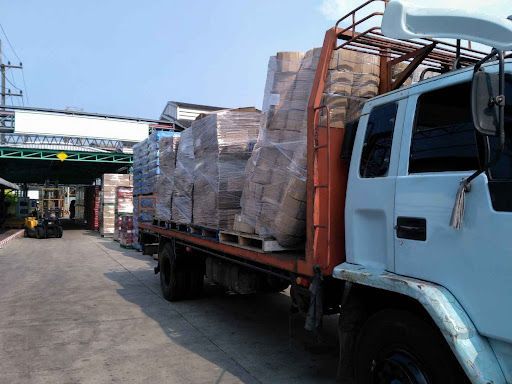Are you still struggling with Cargo Claims?
Shipping challenges
It’s impossible to talk about supply chain without mentioning shipping challenges. This is unsurprising given that a product travels miles from its warehouse to its final destination. During transit goods are exposed to varying environmental factors.
Even when products are handled with the utmost care some factors are out of our control; accidents can happen which can unfortunately lead to cargo damages. Ensuring that your products arrive in good condition is essential to keep your customers satisfied, avoid rework and save costs.
Even as you read this now you may be struggling with your cargo damage claims. With a background in logistics ourselves we know all too well how frustrating this is. It requires a lot of effort to pursue claims and manage numerous documents relating to damages that often seem unjustified.
Here is a brief yet informative blog with tips on how to handle such situations.
Your cargo is damaged. What's next?
You’ve just found out that your cargo has been damaged, and it’s not your fault. Whoever damaged your cargo should give you compensation.
You’ll have to comply with a joint survey, a legal procedure where the liable party will also be involved.
Ensure that the container is available to be inspected during the joint survey and follow the steps:

Step 1
Take pictures of the container and the number of the container on the door and/or side panel.
Take photos of where the container was damaged (holed bent, dropped, corner post damages, etc), in poor condition (heavy rust, dents, old door gaskets, etc), or where it was submerged in water (visible water lines on side panels, etc). Pictures should be taken from outside and inside the container.
Step 2
An image should be taken which shows how the container was stuffed with the cargo (showcasing if the shipper fulfilled their obligations on how to properly pack, stuff, and seal the container at loading).
Step 3
Photographs should then be taken of the actual damage with its extent being the focal point.
Was it 1 box of pulp soaked in the water or half of the container? These differences matter. Also, make sure all observable damage is recorded and try to make sure that both close-up and ‘overview’ images of each damage are recorded.
Step 4
Take all the pictures before returning to the empty container. If possible, put a time stamp on each image. Show the container condition when it is returned.
Step 5
Submit a copy of the BL, the commercial invoice, the packing list, and photos of damaged cargo. Send out the documents immediately to the cargo transport company along with the claim.
Many shippers make the mistake of waiting too long with submitting their claims because they hold out hope that their compensation will simply be paid without having to settle a claim properly. The fact of the matter is that the faster you act, collect damage evidence and keep the time bar, the faster you will get your money back.
This is how you're going to avoid cargo damages.
Most cargo damage is caused by human error which means that a lot of it can be avoided by taking certain measures. That’s why conducting a cargo inspection is critical to ensure that your products are being stuffed and handled correctly, consequently reducing damages or losses.
By creating proof of the condition, you are ensuring that your goods are in good condition and have all the necessary visual data gathered.
However, cargo inspections are not only about taking pictures. They are workflows where you collect valuable information such as forms, checklists, documents, etc. And, if damage occurs during transit, your team will have enough evidence to confirm that it's not your company's fault and the parties involved in the shipping should be responsible for it.
Check out a quick guideline:
how to stuff cargo inside a container.
The right tool for cargo damage
Now you know how essential it is to collect cargo visual data to avoid unfair claims. But where to store it?
Cargosnap is your tool for transforming your processes flexibly and in a customized way, creating easy steps for teams to standardize processes and structure cargo information. Storing cargo data has never been so easy!
Managing your inspections digitally will minimize your business’s risks and ensure operational success. It will significantly impact the success of gathering and storing cargo information. Checklists and forms can be quickly customized by the head of each department and automatically shared with all the parties responsible.
Cargosnap will help you to get:
- Real-time inspections reports
- The ability to communicate with customers and co-workers on one platform
- End-to-end inspection visibility
- GPS & Weather conditions
- A wide range of integration options
- Improved employee performance by having an efficient data collection process
- Automated process allowing co-workers to send emails or notify teams and partners automatically.
When you learn how to weave your team together and do things differently, controlling your operations becomes easy as can be.





